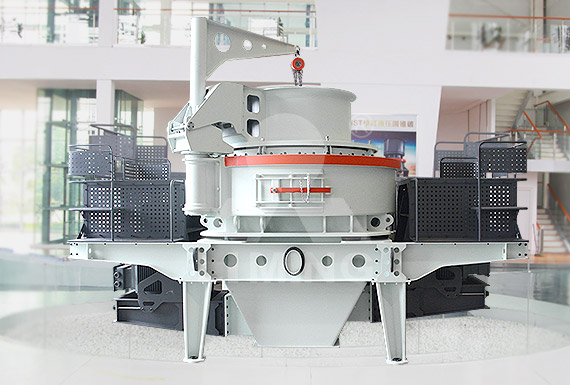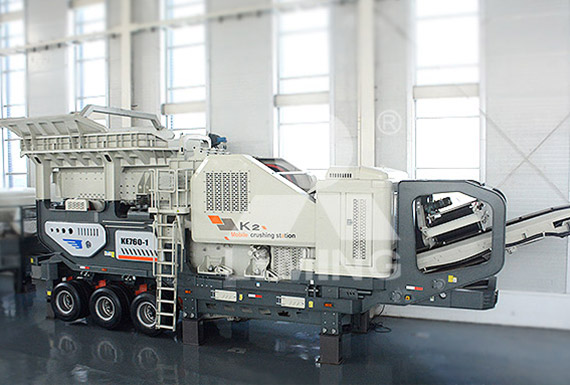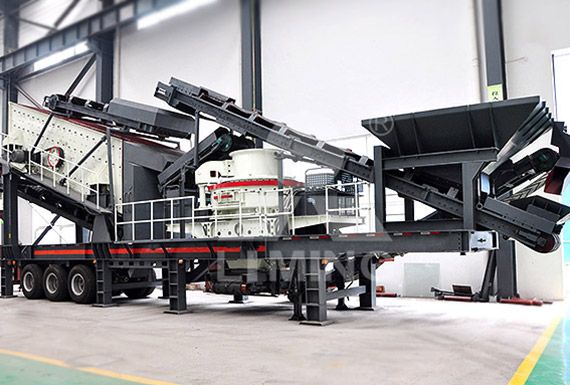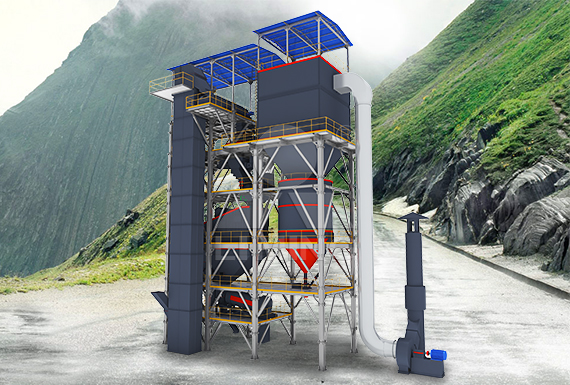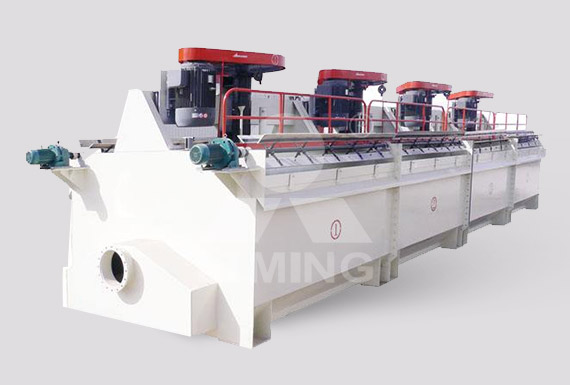المنتجات الساخنة

Rare Earth and Radioactive Waste NTN
2018-6-12 The LAMP radioactive waste will require isolation from the environment for hundreds of years. Current disposal plans are likely to lead to groundwater Rare earth refineries have a reputation for being highly polluting based on information arising from Chinese operations (China produces most of the rare
Contact
TENORM: Rare Earths Mining Wastes US EPA
2021-5-26 Rare earth minerals are processed primarily from ores and minerals that naturally contain uranium and thorium. Processing rare earth minerals involves the separation and removal of uranium and thorium, which results in TENORM wastes. For detailed information and publications about rare earths, including statistics about domestic and
Contact
Radioactive waste standoff could slash high tech's supply
2019-4-1 Rare earth elements (REEs) occupy atomic numbers 57 to 71, the "lanthanide series" of the periodic table, and also include scandium and yttrium. Their exceptional magnetic and conductive traits make them critical to clean energy technology, such as hybrid fuel cells, solar panels, and wind turbine magnets. "Although rare earth oxides production
Contact
Boom in Mining Rare Earths Poses Mounting Toxic Risks
2013-1-28 The mining of rare earth metals, used in everything from smart phones to wind turbines, has long been dominated by China. But as mining of these key elements spreads to countries like Malaysia and Brazil, scientists warn of the
Contact
Big Wind’s Dirty Little Secret: Toxic Lakes and Radioactive
2013-10-23 Big Wind’s Dependence on China’s “Toxic Lakes”. The wind industry requires an astounding amount of rare earth minerals, primarily neodymium and dysprosium, which are key components of the magnets used in modern wind turbines. Developed by GE in 1982, neodymium magnets are manufactured in many shapes and sizes for numerous purposes.
Contact
A safer and cleaner process for recovering thorium and
2021-3-15 In the past, the researches on the separation of radioactive elements from rare earth ores mainly focused on monazite, bastnaesite and mixed rare earth ores, while the researches on the radioactivity of IREO mainly focused on the types, contents and hazards of radioactive substances (Xiao et al., 2016, Liao et al., 2018).Due to the different mining and smelting
Contact
Rare earth mining poses toxic risks Aliran
2020-12-23 The mining of REEs has caused contamination of soil and water. Radioactive waste can leach out into aquatic environments and be absorbed by aquatic vegetation, which can then bioaccumulate and potentially enter the human chain if livestock or humans choose to eat the vegetation. Exposure to radioactive waste can lead to cancer, respiratory
Contact
Rare Earth Elements: A Resource Constraint of the Energy
2021-5-18 Rare earth elements are widely distributed throughout the earth’s crust, but generally in low concentrations. The concentration of individual REEs depends on the type of mineral deposit being mined, and REEs are often found alongside radioactive elements such as thorium and uranium (Rhodes 2011).
Contact
Recycling of the rare earth elements ScienceDirect
2018-10-1 The rare earth elements (REE) are vital to modern technologies and society and are amongst the most critical of the critical elements. Despite these facts, typically only around 1% of the REE are recycled from end-products, with the rest deporting to waste and being removed from the materials cycle. This stone provides an overview of the
Contact
Toward the Circular Economy of Rare Earth Elements: A
2021-6-25 Rare earth elements (REEs) are increasingly critical to the high-technology and low-carbon economy. With a shift to sustainable socioeconomic development that aims to be less fossil fuel dependent, global demand for REEs continues to rise, despite their uncertain supply chain and high environmental impact of production. Here, we review recent research on REEs,
Contact
The selective recovery of rare earth from radioactive waste
2022-4-1 Because radioactive elements may migrate with rainwater and pollute the environment, the treatment of rare earth (RE) radioactive waste residue is of great significance. The process is helpful to recover RE and radioactive element, also reduce the volume of solid pollutants. In this , a novel oil-soluble oxamic acid extractant was
Contact
A safer and cleaner process for recovering thorium and
Rare earth elements (REEs) have attracted widely attentions because of their excellent properties, however, radioactive waste residue generated during the REEs production has created serious environmental problems. This study aimed to develop a safer and cleaner technology, including residue leachin
Contact
Toxic and Radioactive: The Damage From Mining Rare
2021-4-13 There have also been reports of freshwater becoming salinated due to extensive acidic waste water during lithium mining. But lithium is not the only raw material that causes damage. Securing just one ton of rare earth elements produces 2,000 tons of toxic waste, and has devastated large regions of China, said Günther Hilpert, head of the Asia
Contact
Rare Earth Elements: A Resource Constraint of the Energy
2021-5-18 Rare earth elements are widely distributed throughout the earth’s crust, but generally in low concentrations. The concentration of individual REEs depends on the type of mineral deposit being mined, and REEs are often found alongside radioactive elements such as thorium and uranium (Rhodes 2011).
Contact
Rare Earth Elements phaa.net.au
and radioactive waste generation. Rare earth element extraction and production can also leave a large environmental footprint through resource and pollution intensive processes, which need to be monitored.1 Tangible actions designed to mitigate these risks are required.
Contact
Big Wind’s Dirty Little Secret: Toxic Lakes and Radioactive
2018-11-1 Big Wind’s Dependence on China’s “Toxic Lakes”. The wind industry requires an astounding amount of rare earth minerals, primarily neodymium and dysprosium, which are key components of the magnets used in modern wind turbines. Developed by GE in 1982, neodymium magnets are manufactured in many shapes and sizes for numerous purposes.
Contact
Fate and Environmental Impact of Thorium Residues
2016-8-9 Rare earth (RE) processing is an environmental hazardous operation. Processed minerals often contain radioactive elements like thorium which occur together with the precious RE elements due to their chemical and physical similarities. Environmental contamination with thorium around RE mining and processing sites is an issue of concern, and many incidences
Contact
Eco-Friendly Method for Recovery of Rare-Earth Metals
2022-5-13 This activation strategy is feasible for various secondary wastes, as demonstrated by CFA, BR and e-waste. The rapid FJH process is scalable and highly energy-efficient with a low electrical energy consumption of 600 kWh/ton or $12 in electricity per ton, enabling a profit percentage of >10×. Rare earth elements await in wastePlay.
Contact
Toward the Circular Economy of Rare Earth Elements: A
2021-6-25 Rare earth elements (REEs) are increasingly critical to the high-technology and low-carbon economy. With a shift to sustainable socioeconomic development that aims to be less fossil fuel dependent, global demand for REEs continues to rise, despite their uncertain supply chain and high environmental impact of production. Here, we review recent research on REEs,
Contact
Chinese Rare Earths researchgate.net
2004-1-1 J.-Y. Li. This stone established a new method for determination of total content of rare earth in waste rare earth polishing powder by modifying method of
Contact
Poor Radioactive Waste Handling at Malaysian Rare Earth
2013-1-30 The Oeko-Institute has published a report criticising Australian Rare Earth mining company, Lynas Corporation's refining facility in Malaysia which is critical of its environmental impact and its poor storage of radioactive wastes.
Contact
Toxic and Radioactive: The Damage From Mining Rare
2021-4-13 There have also been reports of freshwater becoming salinated due to extensive acidic waste water during lithium mining. But lithium is not the only raw material that causes damage. Securing just one ton of rare earth elements produces 2,000 tons of toxic waste, and has devastated large regions of China, said Günther Hilpert, head of the Asia
Contact
(PDF) Immobilization of Radioactive Rare Earth oxide
The rare earth oxide wastes consisting of major 8 nuclides Y, La, Ce, Pr, Nd, Sm, Eu and Gd, are generated during the salt waste treatment of PyroGreen process.
Contact
Potential dangers of mining rare earth metals
Rare earth metals are used in wind turbines, also, which means that even though clean energy is generated, the use of these toxic metals makes the green energy impure. Rare earth metals mining generate a lot of radioactive waste which is dangerous for both humans and the environment. Take a look at the potential dangers of mining rare earth metals:
Contact
Human Rights, the Environment and Radioactive Waste: A
Human Rights, the Environment and Radioactive Waste: A Study of the Asian Rare Earth Case in Malaysia. Mika Ichihara. Mika Ichihara is a doctoral candidate at the Department of Law, Essex University, UK; Andrew Harding is a Senior Lecturer in the Law Department, School of Oriental and African Studies, London University, UK. Amr M. Mowafy
Contact
Eco-Friendly Method for Recovery of Rare-Earth Metals
2022-5-13 This activation strategy is feasible for various secondary wastes, as demonstrated by CFA, BR and e-waste. The rapid FJH process is scalable and highly energy-efficient with a low electrical energy consumption of 600 kWh/ton or $12 in electricity per ton, enabling a profit percentage of >10×. Rare earth elements await in wastePlay.
Contact
Rare earth mining project at Round Top near Sierra Blanca
2021-12-8 The rare earth mining process is known to produce radioactive and toxic waste byproducts, raising health and environmental concerns around what a project of this scale could mean for the Big Bend region. REEs have been found in at least 19 states and a number of other mining projects are underway in Texas and other states.
Contact
Toward the Circular Economy of Rare Earth Elements: A
2021-6-25 Rare earth elements (REEs) are increasingly critical to the high-technology and low-carbon economy. With a shift to sustainable socioeconomic development that aims to be less fossil fuel dependent, global demand for REEs continues to rise, despite their uncertain supply chain and high environmental impact of production. Here, we review recent research on REEs,
Contact
Chinese Rare Earths researchgate.net
2004-1-1 J.-Y. Li. This stone established a new method for determination of total content of rare earth in waste rare earth polishing powder by modifying method of
Contact
The Rare Earth Element Promethium An Overview
2022-5-13 It is an extremely rare metal, with only about 500–600 grams naturally occurring in the earth’s crust at any given time. However, it is not stable and therefore undergoes radioactive decay, producing different isotopes. It is the only rare-earth, radioactive metal on the periodic table. Promethium is classified as a rare-earth metal
Contact

